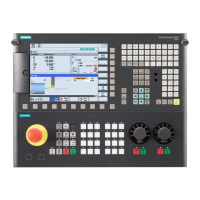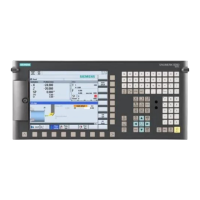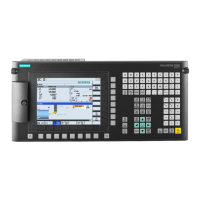Programming
2.5 Softkey menus
Expanding the user interface
Commissioning Manual, 11/2006, 6FC5397-0DP10-0BA0
2-57
Example
//S(Menu1) ; Start identifier of softkey menu
HS1=("NEW",ac6,se2) ; Define softkey HS1, assign the label "OK", security
level 6 and the status "disabled"
HS3=("\\bild1.bmp") ; Assign a graphic to the softkey
HS5=("Exit")
VS2=("Subscreen")
VS3=($85011, ac7, se2)
VS7=("Abort", ac1, se3) ; Define softkey HS1, assign the label "Cancel",
security level 1 and the status "displayed".
VS8=("OK", ac6, se1) Define softkey VS8, assign the label "OK", security
level 6 and the status "visible"
PRESS(HS1) ; Method start identifier
HS1.st="Calculate" ; Assign a label text to the softkey
...
END_PRESS ; Method end identifier
PRESS(RECALL) ; Method start identifier
LM("Screen form21") ; Load dialog
END_PRESS ; Method end identifier
//END ; Softkey menu end identifier
<RECALL> key
In addition to the horizontal and vertical softkeys, a <RECALL> key is also available.
In contrast to the softkeys, the RECALL key does not need to be defined. The "Status" and
"Access Level" properties can be assigned to the key during runtime.
If you do not assign any action (function, calculation of variables, property changes) to
<RECALL>, you can use it to exit newly configured user interfaces and return to the
standard application.
Example
PRESS(RECALL)
RECALL.ac = 1
LM("Screen form5")
END_PRESS
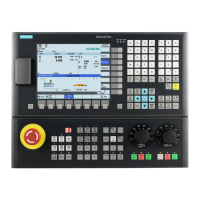
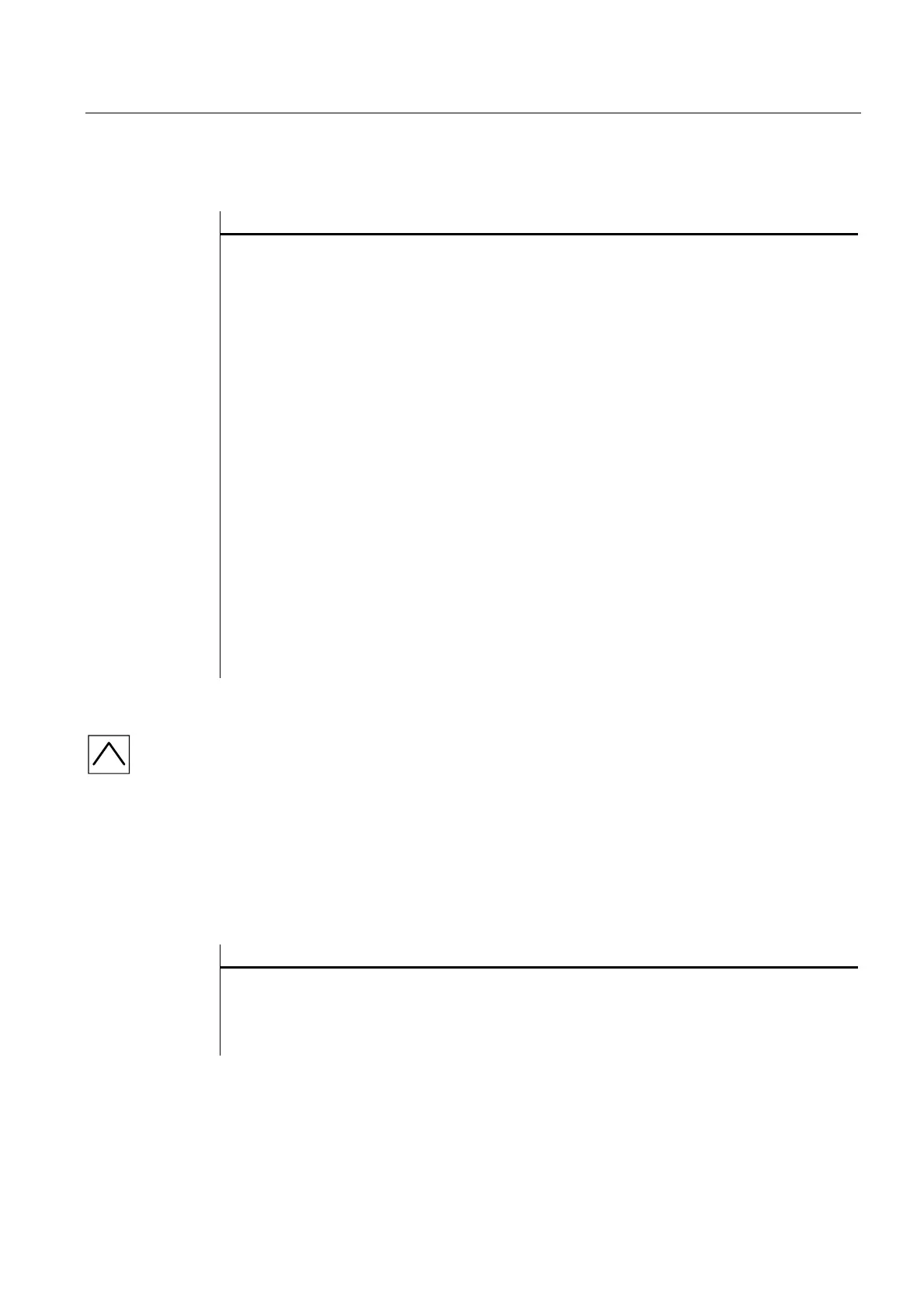